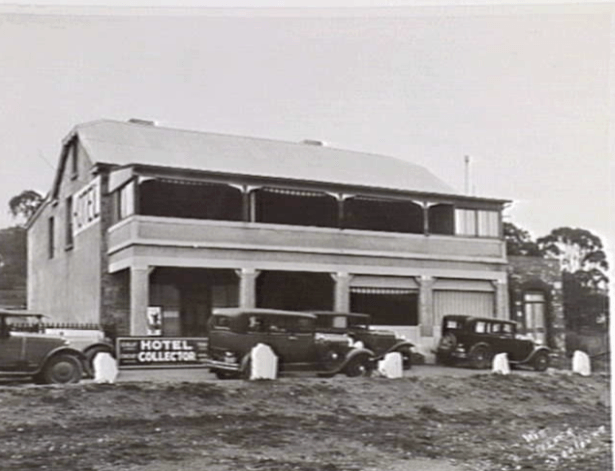The village of Collector is located within the Parish of Collector, County of Argyle. In 1820 from the hillside central to the Collector village, Governor Lachlan Macquarie and Reverend Robert Cartwright, marvelled at the great expanse of water to the south. From around 1838, Cartwright erected a church, school and house to the west of the Collector Store, c.1838 and worked throughout the southern districts until his death at Goulburn in 1856.

Terrence Murray built a home behind the Collector Inn, down toward the creek. Murray eventually settled on the property Winderadeen in 1837 becoming generally known as the ‘Father of Collector’. Murray commissioned a surveyor to layout the village of ‘Murray town’ or ‘Old Collector’ in 1841. Streets were named after his friends, Bourke after the governor who appointed him magistrate and O’Sullivan the agent of the Goulburn Commercial Bank.
Murray was responsible for the introduction of Murray Cod into local waterways. These he transported in barrels from the Molonglo River near Yarralumla.By 1837 a postal service was established from Goulburn across the flat plains to Lake George and down to Yass. The need for coaching stations led to the development of both Gundaroo and Collector.

By 1847 Collector had an inn, store, three hotels, several blacksmiths’ shops and a tailor. The village was illuminated by oil lamps in 1850 and a wind powered mill was operating in 1859 the year in which ‘new’ Collector was surveyed on higher ground.
Twenty six years later, the village was declared a town. Because of its location on the road to the southern goldfields, Collector attracted the attention of numerous bushrangers including Frank Gardiner and Ben Hall. On 26th January 1865 Hall’s gang, including Johnny Gilbert and John Dunn, held up Kimberley’s Commercial Hotel and the adjacent Wellington boot store. Constable Samuel Nelson tried to apprehend them however was shot dead during the fracas.

Alluvial gold yields had declined by the 1860s and the only businesses remaining were the General Store and two hotels – the Bushranger and the Wheat Sheaf.
Fire destroyed many of the early historical records of Collector which were stored in the School of Arts. The Collector Court House was demolished in 1952 and the materials used in the construction of the Memorial Hall.





